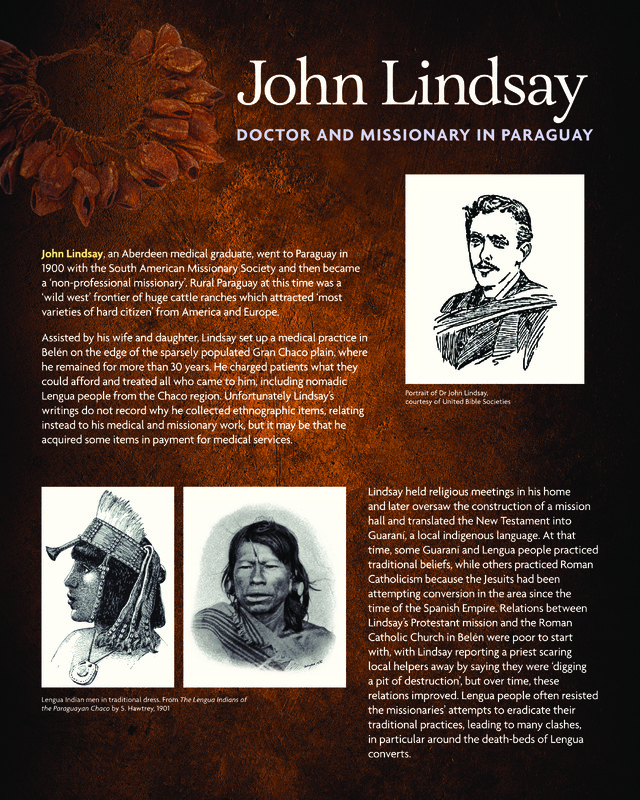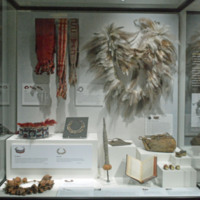John Lindsay
DOCTOR AND MISSIONARY IN PARAGUAY
John Lindsay, an Aberdeen medical graduate, went to Paraguay in 1900 with the South American Missionary Society and then became a 'non-professional missionary'. Rural Paraguay at this time was a 'wild west' frontier of huge cattle ranches which attracted 'most varieties of hard citizen' from American and Europe.
Assisted by his wife and daughter, Lindsay set up a medical practice in Belen on the edge of the sparsley populated Gran Chaco plain, where he remained for more than 30 years. He charged patients what they could afford and treated all who came to him, including nomadic Lengua people from the Chaco region. Unfortunately Lindsay's writings do not record why he collected ethnographic items, relating instead to his medical and missionary work, but it may be that he acquired some items in payment for medical services.
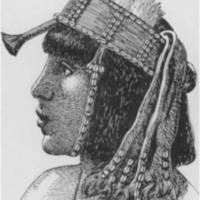
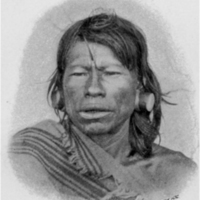
Lengua men in traditional dress. From The Lengua Indians of the Paraguayan Chaco by S. Hawtrey, 1901
Lindsay held religious meetings in his home and later oversaw the construction of a mission hall and translated the New Testament into Guarani, a local indigenous language. At that time, some Guarani and Lengua people practiced traditional beliefs, while others practiced Roman Catholicism because the Jesuits had been attempting conversion in the area since the time of the Spanish Empire. Relations between Lindsay's Protestant mission and the Roman Catholic church in Belen were poor to start with, with Lindsay reporting a priest scaring local helpers away by saying they were 'digging a pit of destruction', but over time, these relations improved. Lengua people often resisted the missionaries' attempts to eradicate their traditional practices, leading to many clashes, in particular around the death-beds of Lengua converts.
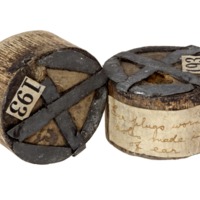
Ear discs
Lengua men wore decorative ear discs made from bamboo. Lindsay notes that this pair belonged to a 'witch doctor'. However, the pair here is rather plain. Lengua shamans' ear discs normally included reflective shards of glass and highly polished strips of tin that were said to relate their power to interpret the spirit world.
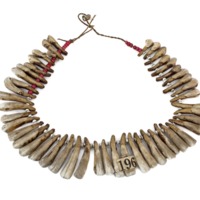
Necklace
This necklace made of sheep's teeth was worn by Lengua women. Both men and women wore beaded and decorated necklaces and other ornaments.
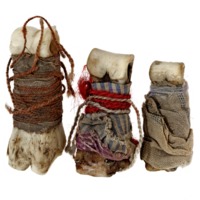
Dolls
These three objects are dolls that would have belonged to a child. They are made with bits of cloth and spun wool wrapped around animal toe bones.
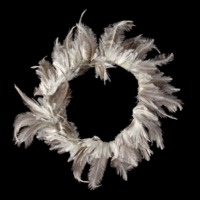
Feather belt
The feathers of the rhea, a large flightless bird which lives in open grasslands, were used extensively for body ornaments. This string of rhea feathers is finely woven onto natural fibre twine that could be tied around the waist. It may have been worn by Lengua women in a traditional women's dance that protects a young girl from evil spirits.
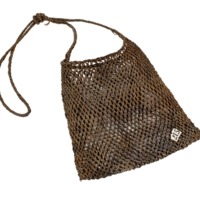
Net bag
These bags are made of twine from the leaves of a wild pineapple common in the Chaco area. Lengua people were known for the quality of their twine, or string, which was generally called caraguatá throughout the continent. Early Europeans in South America had an economic interest in this fibre because of its durability,. The smaller string bag made from caraguatá may have been an aiyin, a bag that men wore tied around the waist to carry the 'little necessaries of life' - ear spools, animal claws, tobacco, bone implements, fire-sticks, and more.
ABDUA:9928
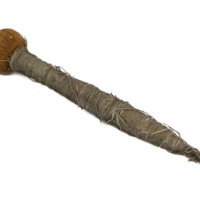
Spindle
This small spindle, or nithponga, was used for spinning wool or cotton into yarn for belts, blankets, and headdresses. Lengua women made high quality woollen blankets with stripes and patterns. When new, and especially if dyed in red, blankets were highly prized by men who wouldn't part with them 'except in exchange for a horse'.
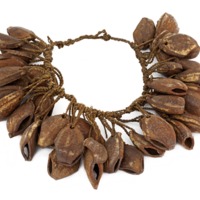
String of seed pods
Seed pods of a plant found on the banks of the River Paraguay and used for making black face paint.
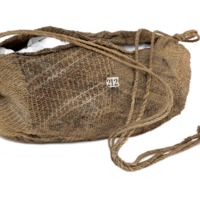
String bag
These bags are made of twine from the leaves of a wild pineapple common in the Chaco area. Lengua people were known for the quality of their twine, or string, which was generally called caraguatá throughout the continent. Early Europeans in South America had an economic interest in this fibre because of its durability,. The smaller string bag made from caraguatá may have been an aiyin, a bag that men wore tied around the waist to carry the 'little necessaries of life' - ear spools, animal claws, tobacco, bone implements, fire-sticks, and more.
ABDUA:9929
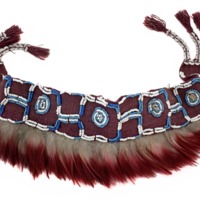
Headband
This headband, or kyitkyin konyaskuk, is decorated with dyed feathers of the Roseate Spoonbill, a South American water bird. Feathers and wool are dyed red with natural cochineal. Lengua men, and sometimes women, wore headbands such as these on festive occasions.
ABDUA:8946
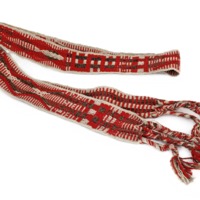
Belts
Lengua women spun and wove wool to make belts as well as blankets and headbands. Women wore a leather skirt secured with a narrow belt at the waist, while men wore a woven wool blanket held in place with a wide belt. Red was a favourite colour. Traditionally, cochineal insects or plant extracts were used to produce natural red dyes. The bright red colouring on one of these belts, though, came from imported red wool which used synthetic dye.
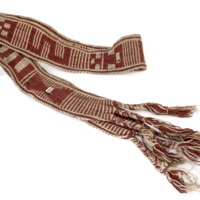
Belts
Lengua women spun and wove wool to make belts as well as blankets and headbands. Women wore a leather skirt secured with a narrow belt at the waist, while men wore a woven wool blanket held in place with a wide belt. Red was a favourite colour. Traditionally, cochineal insects or plant extracts were used to produce natural red dyes. The bright red colouring on one of these belts, though, came from imported red wool which used synthetic dye.
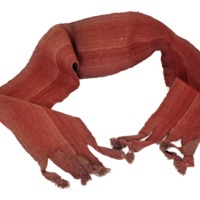
Belts
Lengua women spun and wove wool to make belts as well as blankets and headbands. Women wore a leather skirt secured with a narrow belt at the waist, while men wore a woven wool blanket held in place with a wide belt. Red was a favourite colour. Traditionally, cochineal insects or plant extracts were used to produce natural red dyes. The bright red colouring on one of these belts, though, came from imported red wool which used synthetic dye.


